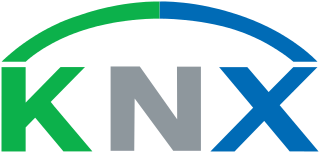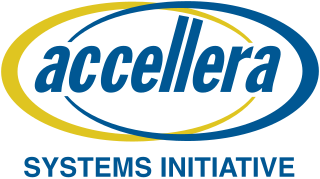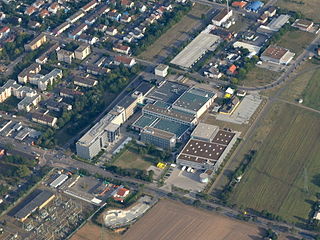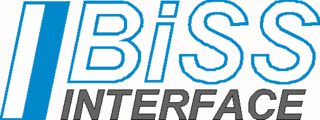Related Research Articles

KNX is an open standard for commercial and domestic building automation. KNX devices can manage lighting, blinds and shutters, HVAC, security systems, energy management, audio video, white goods, displays, remote control, etc. KNX evolved from three earlier standards; the European Home Systems Protocol (EHS), BatiBUS, and the European Installation Bus. It can use twisted pair, powerline, RF, or IP links. On this network, the devices form distributed applications and tight interaction is possible. This is implemented via interworking models with standardised datapoint types and objects, modelling logical device channels.
A Controller Area Network is a robust vehicle bus standard designed to allow microcontrollers and devices to communicate with each other's applications without a host computer. It is a message-based protocol, designed originally for multiplex electrical wiring within automobiles to save on copper, but it can also be used in many other contexts. For each device, the data in a frame is transmitted serially but in such a way that if more than one device transmits at the same time, the highest priority device can continue while the others back off. Frames are received by all devices, including by the transmitting device.

Profibus is a standard for fieldbus communication in automation technology and was first promoted in 1989 by BMBF and then used by Siemens. It should not be confused with the Profinet standard for Industrial Ethernet. Profibus is openly published as part of IEC 61158.

Accellera Systems Initiative (Accellera) is a standards organization that supports a mix of user and vendor standards and open interfaces development in the area of electronic design automation (EDA) and integrated circuit (IC) design and manufacturing. It is less constrained than the Institute of Electrical and Electronics Engineers (IEEE) and is therefore the starting place for many standards. Once mature and adopted by the broader community, the standards are usually transferred to the IEEE.
Fieldbus is the name of a family of industrial computer networks used for real-time distributed control. Fieldbus profiles are standardized by the International Electrotechnical Commission (IEC) as IEC 61784/61158.
The VDE e. V. is one of Europe’s largest technical-scientific associations with 36,000 members, including 1,300 corporate and institutional members and 8,000 students.
Fieldbus Foundation was an organization dedicated to a single international, interoperable fieldbus standard. It was established in September 1994 by a merger of WorldFIP North America and the Interoperable Systems Project (ISP). Fieldbus Foundation was a not-for-profit trade consortium that consisted of more than 350 of the world's suppliers and end users of process control and manufacturing automation products. Working together those companies made contributions to the IEC/ISA/FDI and other fieldbus standards development.
Actuator Sensor Interface is an industrial networking solution used in PLC, DCS and PC-based automation systems. It is designed for connecting simple field I/O devices in discrete manufacturing and process applications using a single two-conductor cable.
INTERBUS is a serial bus system which transmits data between control systems and spatially distributed I/O modules that are connected to sensors and actuators.
NeSSI is a global and open initiative sponsored by the Center for Process Analysis and Control (CPAC) at the University of Washington, in Seattle.
Sercos III is the third generation of the Sercos interface, a standardized open digital interface for the communication between industrial controls, motion devices, input/output devices (I/O), and Ethernet nodes, such as PCs. Sercos III applies the hard real-time features of the Sercos interface to Ethernet. It is based upon and conforms to the Ethernet standard. Work began on Sercos III in 2003, with vendors releasing first products supporting it in 2005.
IEEE 1451 is a set of smart transducer interface standards developed by the Institute of Electrical and Electronics Engineers (IEEE) Instrumentation and Measurement Society's Sensor Technology Technical Committee describing a set of open, common, network-independent communication interfaces for connecting transducers to microprocessors, instrumentation systems, and control/field networks. One of the key elements of these standards is the definition of Transducer electronic data sheets (TEDS) for each transducer. The TEDS is a memory device attached to the transducer, which stores transducer identification, calibration, correction data, and manufacturer-related information. The goal of the IEEE 1451 family of standards is to allow the access of transducer data through a common set of interfaces whether the transducers are connected to systems or networks via a wired or wireless means.
WirelessHART within telecommunications and computing, is a wireless sensor networking technology. It is based on the Highway Addressable Remote Transducer Protocol (HART). Developed as a multi-vendor, interoperable wireless standard, WirelessHART was defined for the requirements of process field device networks.

Pepperl+Fuchs SE is a German multinational company with its headquarters in Mannheim, Germany. The company manufacture products for fabrication and process automation and specialized in sensor manufacturing, for example, sensors that are used in automatic doors in elevators.
The IODD describes sensors and actuators with an IO-Link communication interface. It contains information about the device’s identity, parameters, process data, diagnosis data, communication properties and the design of the user interface of engineering tools. The IODD comprises different data files: the main file and several optional language files are in XML-format and optional graphical files are in PNG-format.

The Open Geospatial Consortium (OGC), an international voluntary consensus standards organization, originated in 1994. In the OGC, more than 500 commercial, governmental, nonprofit and research organizations collaborate in a consensus process encouraging development and implementation of open standards for geospatial content and services, sensor web and Internet of Things, GIS data processing and data sharing.

The open source BiSS interface (bidirectional/serial/synchronous) is based on a protocol which implements a real time interface. It enables a secure serial digital communication between controller, sensor and actuator. The BiSS protocol is designed in B mode and C mode. It is used in industrial applications which require transfer rates, safety, flexibility and a minimized implementation effort. The BiSS interface has roots in SSI and a simplified INTERBUS. The proprietary standards, Hiperface and EnDat are competing solutions.
Schleicher Electronic GmbH und Co. KG is a German technology company based in Berlin.
The IP500 Alliance with seat in Berlin is an international organization of manufacturers of products and systems for the building automation, of system integrators as well as of operators of buildings and industrial plants. A goal of the IP500 Alliance is it to define with the IP500 communication platform a wireless (Wireless), manufacturer-neutral and safe data transfer for large buildings to develop and make available for it a “turn key module”.
References
- ↑ "AS-Interface bestaetigt Akkreditierung zweier Pruefungslabore". OpenAutomation.de. 2010-08-23.
- ↑ Kai Binder (2012-11-09). "Einfach – sicher – international". SPS Magazin.
- ↑ Rolf Becker (2009-09-09). "AS-Interface erschliesst neue Anwendungen". SPS Magazin.
- ↑ Kai Binder (2010-04-08). "AS-I Power 24V". SPS Magazin.
- ↑ Gary Mintchell (2012-07-23). "AS-Interface Developer Kit". Automation World.